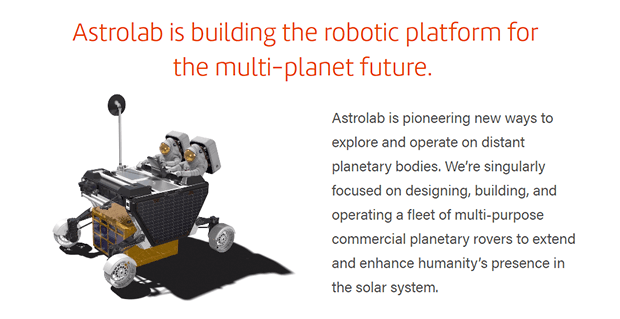
Venturi Astrolab’s Mission 1, a groundbreaking lunar expedition set for mid-2026, will deploy a $160 million payload via its innovative Flex rover. This mission, a collaboration with SpaceX, marks a significant advancement in lunar exploration and the potential for a sustainable lunar economy. Astrolab’s Flex rover, with its modular design and capacity for both cargo and crew, represents a new era in versatile space technology.
In an ambitious leap towards lunar exploration, Venturi Astrolab has embarked on a groundbreaking mission. This venture, not merely another space expedition, stands as a testament to human ingenuity and the relentless pursuit of knowledge beyond our planet.
The Mission Overview
Termed Mission 1, this endeavor is set to launch as early as mid-2026, deploying a significant investment worth over $160 million. This mission, unique in its funding strategy, showcases the evolving landscape of space exploration, no longer confined to the traditional avenues of NASA contracts. Venturi Astrolab, a burgeoning lunar technology startup, has seized this opportunity, signaling a new epoch in moon missions.
The Flex Rover
Central to this mission is the Flex rover, a marvel of engineering developed by Astrolab. This rover breaks away from the conventional custom-built designs of its predecessors, adopting a modular system. Its design enables it to transport payloads up to 1,500 kilograms to the lunar surface, a capability that could redefine lunar logistics. The Flex rover’s versatility extends beyond its cargo capacity; it can be modified to accommodate astronauts in an unpressurized configuration, illustrating Astrolab’s vision for a multifaceted, adaptive lunar vehicle.
Diverse Payloads and Partnerships
Mission 1 is a mosaic of scientific exploration and commercial ambition, carrying payloads for eight distinct customers. These include Argo Space Corporation, with a mission to harness water from lunar regolith, and Astroport Space Technologies, focusing on technology to convert lunar regolith into building materials. Avalon Space aims to conduct experiments pivotal for the lunar economy, while Interstellar Lab will investigate the effects of the moon’s environment on plant life. LifeShip, Inc. plans to deliver a DNA seed bank as a safeguard for Earth’s biodiversity. These partnerships not only diversify the mission’s objectives but also underscore the collaborative spirit fueling this lunar journey.
The Role of SpaceX
SpaceX’s involvement in Mission 1 is pivotal, providing the crucial link between Earth and the moon. This collaboration exemplifies the growing synergy between private space companies, combining SpaceX’s renowned launch capabilities with Astrolab’s innovative lunar technology. The launch, scheduled aboard a SpaceX Starship, marks a significant milestone in commercial space travel and lunar exploration, reinforcing the role of private enterprise in advancing space missions.
Beyond Cargo Transport
While primarily designed for cargo, the Flex rover’s potential extends to manned lunar exploration. This adaptability signifies Astrolab’s foresight in creating a multifunctional vehicle, one that can navigate the lunar terrain with or without a crew. The prospect of modifying the Flex rover for human transport opens avenues for future missions, potentially establishing a permanent human presence on the moon. Astrolab envisions its rovers playing a central role in lunar transportation, in tandem with companies like SpaceX, Astrobotic, and Intuitive Machines, each contributing to the larger objective of sustained lunar exploration.
Implications for Lunar Exploration and Economy
Astrolab’s Mission 1 stands at the forefront of a new era in lunar exploration. Its success could catalyze the development of a sustainable lunar economy, where scientific research, resource utilization, and commercial interests coalesce. The mission’s diversity in payloads and objectives underscores the moon’s potential as a hub for various scientific and economic activities. The Flex rover, with its modular design and versatile capabilities, embodies this shift towards a more dynamic and pragmatic approach to space exploration, one that prioritizes adaptability and sustainability.
Venturi Astrolab’s Mission 1 is not just a mission to the moon; it is a harbinger of the future of lunar exploration. With its innovative Flex rover, diverse partnerships, and strategic collaboration with SpaceX, Astrolab is charting a new course in space exploration. This mission could redefine our approach to the moon, paving the way for a thriving lunar economy and sustainable human presence beyond Earth. As we await the launch of this landmark mission, the anticipation is palpable – a testament to humanity’s unquenchable thirst for discovery and the relentless pursuit of progress in the final frontier.
Please email us your feedback and news tips at hello(at)techcompanynews.com

